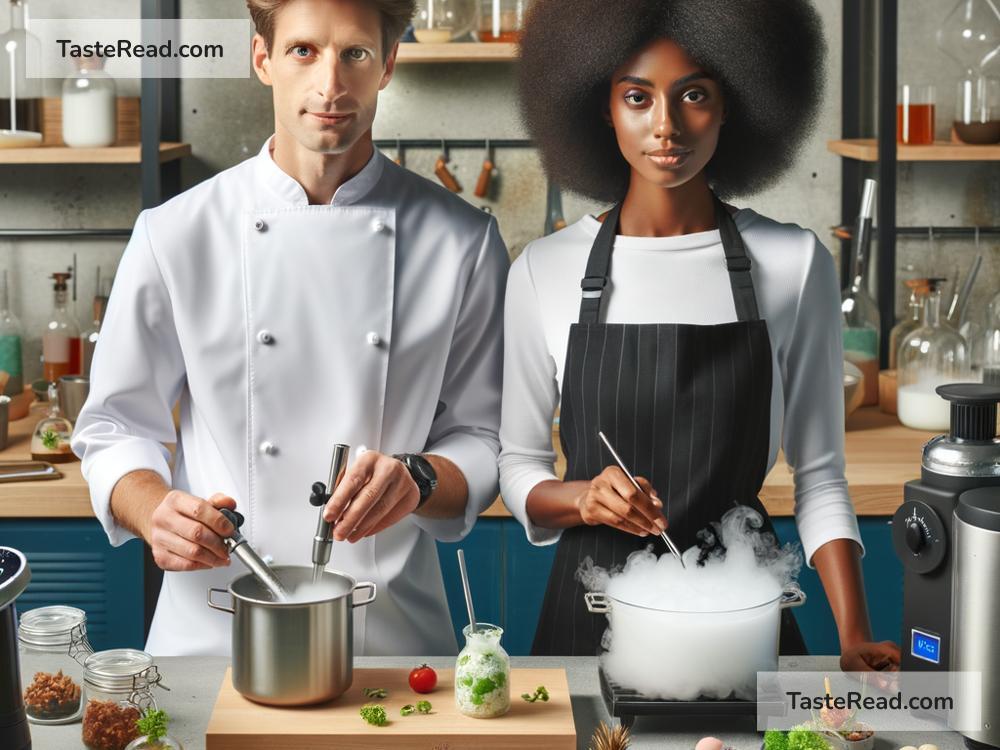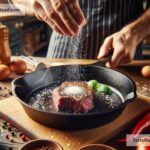The Science of Cooking with Chemical Technology: Techniques and Tips
Cooking is more than an art; it is a science. Behind every perfectly baked cake or crispy fried food is chemistry at work. Diving into the world of chemical technology in cooking can help you level up your culinary skills. While this might sound complicated, don’t worry—we’ll explain it in simple terms so you can master the science of cooking with ease. Let’s explore how chemistry can turn ordinary ingredients into extraordinary meals with techniques and tips that anyone can try.
What is Chemical Technology in Cooking?
Chemical technology in cooking involves using scientific processes to understand and control how food reacts during preparation, cooking, and storage. It studies how heat, pressure, and various chemical reactions transform raw ingredients into flavorful dishes. This science is the reason why bread rises, eggs solidify when cooked, and meat becomes tender.
When you put chemical technology into practice in your kitchen, you can improve the taste, texture, and appearance of meals. Understanding chemical reactions also allows you to troubleshoot common cooking issues, like why your cookies came out flat or why your meat turned out tough.
The Science Behind Everyday Cooking
Here are some key concepts from chemical technology at play in everyday cooking:
-
Maillard Reaction: Known as the “browning process,” this reaction occurs when heat causes amino acids and sugars in food to combine, creating new flavors and aromas. It’s why baked bread smells so good and grilled meat has that rich, savory crust. To get the best Maillard reaction, dry the surface of your food before cooking and use high heat for a short time.
-
Leavening Agents: Ingredients like baking powder, baking soda, or yeast are responsible for making baked goods rise. These agents create gas bubbles (usually carbon dioxide) that expand when heated, creating fluffy breads and cakes. For best results, measure your leavening agents carefully, as too much can result in collapsed baked goods.
-
Emulsification: Some ingredients, like oil and water, don’t mix well. Emulsification is the process of combining them, often with the help of an emulsifier like egg yolks or mustard. It’s how mayonnaise and salad dressings are created. When emulsifying, add liquid slowly and whisk continuously to create a smooth sauce.
-
Proteins and Denaturation: Proteins in meat, eggs, and dairy products change their structure when exposed to heat, acid, or salt. This process is called denaturation. It’s why scrambled eggs go from runny to firm when cooked or why acidic marinades tenderize meat. To prevent overcooking or toughness, monitor cooking times and temperatures closely.
-
Gelatinization and Thickening: Starches in flour, rice, or potatoes absorb water and swell when heated, forming a thick texture in dishes like soups and sauces. To avoid lumps, dissolve starch in cold water before adding it to hot liquids.
Techniques and Tips for Using Chemical Technology in Cooking
Now that we’ve covered the basics, here are some practical techniques and tips for applying chemical technology to your kitchen experiments:
1. Mastering Heat Control
The temperature of cooking directly impacts chemical reactions. Low heat is perfect for simmering sauces and stews, while high heat triggers reactions like caramelization and browning. Use a thermometer to monitor cooking temperatures, especially for meats and baked goods.
2. Balancing Acidity
Acid affects both flavor and texture. For example, adding lemon juice or vinegar brightens flavors in marinades but also helps tenderize proteins. Conversely, acidic liquids can slow down starch gelatinization, so use them sparingly in soups or gravy.
3. Experimenting with Leavening
If your cake didn’t rise, it might be because your baking powder or soda has expired. Keep these ingredients fresh and measure them accurately. You can also create a DIY leavening substitute by mixing baking soda with an acidic liquid like yogurt or lemon juice.
4. Timing is Everything
Control the timing of chemical reactions to get optimal results. For example, letting dough rise allows yeast to produce carbon dioxide over time. Similarly, resting cooked meat before slicing lets juices redistribute, keeping it juicy.
5. Using Salt Strategically
Salt does more than enhance flavor—it also helps proteins denature and extracts moisture. For crispy roasted vegetables, sprinkle salt before cooking to draw out water, helping them caramelize. When making bread, salt slows yeast activity, so be mindful when adding it.
6. Understanding Ingredient Substitutions
Knowing the science behind certain ingredients can help you substitute them more effectively. For example, if you need a dairy-free alternative, use almond milk in recipes that don’t rely heavily on creaminess, since it doesn’t have as much fat.
Science-Proven Cooking Tips
- Searing Tip: Pat meat dry before searing. Moisture on the surface prevents the Maillard reaction.
- Kneading Tip: Over-kneading dough can overwork the gluten, making bread chewy. Stop kneading when the dough feels smooth and elastic.
- Egg Cookery Tip: Cook eggs at low heat to avoid rubbery textures caused by over-denaturation.
- Vegetable Tip: Blanch vegetables in boiling water, then shock them in ice water to preserve bright colors and fresh texture.
Why Learn the Science of Cooking?
Understanding chemical technology doesn’t mean you need a lab in your kitchen. It simply helps you make better decisions while cooking. You’ll be able to fix common problems, like runny sauces or tough meat, and ensure your dishes turn out consistently great.
Cooking with science also boosts creativity. You can confidently experiment with new techniques, flavors, and recipes, knowing how ingredients behave. Plus, learning the chemistry behind cooking can be surprisingly fun—it’s like solving tasty puzzles every time you cook!
Conclusion
The science of cooking with chemical technology opens up a world of possibilities in your kitchen. From browning meat to baking cakes, understanding chemical reactions can help you improve taste, texture, and success in cooking. By using the techniques and tips shared here, you’ll be well on your way to mastering culinary chemistry—and impressing everyone at the dining table. So, grab your apron, start experimenting, and let science guide your cooking journey!


